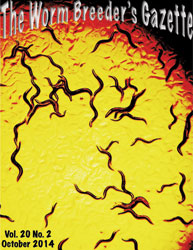Drugs are chemical substances of natural or synthetic origin used for diagnosis, prevention, treatment, and control of disorders. Most drugs are specific to control and cure diseases and, although their curing effects outweigh their side effects, most are associated with side effects. One example is aspirin, which is a salicylate drug, prescribed as an analgesic, antipyretic, and anti-inflammatory medication; it has been reported to cause Reye syndrome (sudden brain damage and liver problems) when given to children suffering from flu and chicken pox (Belay et al., 1997). The other side effects of aspirin are gastrointestinal ulcers and stomach bleeding (Sorensen et al., 2000).
C. elegans has a well conserved IGF-1/insulin-like signaling pathways. daf-2 encodes an insulin-like receptor in C. elegans, which is a orthologue of the mammalian insulin/IGF receptor family (Kimura et al. 1997). In daf-2(e1370) animals, the decrease of insulin-like signaling results in increased dauer formation. Quantification of daf-2(e1370) dauer formation in C. elegans can be used as an index to measure the level of IGF-1/insulin signaling: enhancement of IGF-1 signaling causes increased dauer formation while decrease in IGF-1 signaling causes cessation in number of dauers formed.
We examined the effect of the drugs silymarin, Godex, aspirin, and pravastatin in modulating IGF-1/insulin signaling. Effects of these drugs on IGF-1/insulin signaling have not been explored. Silymarin is a lipophilic flavonolignan (flavanone derivative) extracted from the seeds and fruits of Silybum marianum (milk thistle). Godex is composed of carnitine orotate, which is the major chemical constituent, it also contains seventeen amino acids as well as vitamin B2, B6, and B12. Both silymarin and Godex are known hepatoprotectant drugs and are mainly used in the clinical treatment of liver cirrhosis, acute liver intoxication, and chronic hepatitis (Al Anati et al., 2009; Park et al., 2001). Aspirin is a salicylate drug used as an analgesic, antipyretic, and anti-inflammatory medication. Pravastatin, a statin, is issued for lowering cholesterol and preventing cardiovascular disease, and is generally well tolerated (Pfeffer et al., 2002).
To test the effect of the above mentioned drugs on IGF-1/insulin signaling, we used daf-2(e1370) animals. Synchronized eggs of daf-2(e1370) were seeded on drug treated (100 µM) and control plates at 22ºC. After 4 days of incubation the number of dauers present on the respective plates were counted manually and further confirmation of dauer was done by SDS treatment. The mean percentage ± S.D of dauer formation on control plates was 41.8±6.1 whereas the drug treated plates showed respective percentage of 1.8±0.7 (p<0.0001) for silymarin, 4.9±1.2 (p<0.0001) for aspirin, and 23.6±2. (p<0.0001) for Godex. All the three drugs showed a statistically significant effect on suppressing dauer formation. The mean percentage of dauer formation on pravastatin treated plate was 78.8 ±11.9, which was also statistically significant (p<0.0001) as compared to control (41.8±6.1).
Our results show that both the hepatoprotective drugs silymarin and Godex, as well as the well-known analgesic drug aspirin, suppress the IGF-1/insulin signaling pathway, while the cholesterol-lowering drug pravastatin enhances this pathway. Our results thus suggest that daf-2(e1370) animals can be used to examine the effect of pharmacological drugs on IGF-1/insulin signaling. This strategy might be useful to examine the effect of drugs in relation to IGF-1 signaling and can be further extrapolated to study the effect of different drugs in relation to insulin signaling in human subjects.
Figures

References
Al-Anati L, Essid E, Reinehr R, and Petzinger E. (2009). Silibinin protects OTA-mediated TNF-alpha release from perfused rat livers and isolated rat Kupffer cells. Mol. Nutr. Food Res. 53, 460–466. 
Belay ED, Bresee JS, Holman RC, Khan AS, Shahriari A, and Schonberger LB. (1999). Reye's syndrome in the United States from 1981 through 1997. N. Engl. J. Med. 340, 1377–1382. 
Kimura KD, Tissenbaum HA, Liu Y, and Ruvkun G. (1997). daf-2, an insulin receptor-like gene that regulates longevity and diapause in Caenorhabditis elegans. Science 277, 942-946. 
Park MS, Kang JS, Jeon JY, Baek SW, Lim GS, and Kwak MJ. (2001). Effectiveness of Godex capsule on chronic liver disease patients. J. Korean Soc. Clin. Pharmacol. Ther. 9, 151–162.
Pfeffer MA, Keech A, Sacks FM, Cobbe SM, Tonkin A, Byington RP, Davis BR, Friedman CP, and Braunwald E. (2002). Safety and tolerability of pravastatin in long term clinical trials: prospective Pravastatin Pooling (PPP) Project. Circulation 105, 2341-2346. 
Sørensen HT, Mellemkjaer L, Blot WJ, Nielsen GL, Steffensen FH, McLaughlin JK, and Olsen JH. (2000). Risk of upper gastrointestinal bleeding associated with use of low-dose aspirin. Am. J. Gastroenterol. 95, 2218–2224. 




